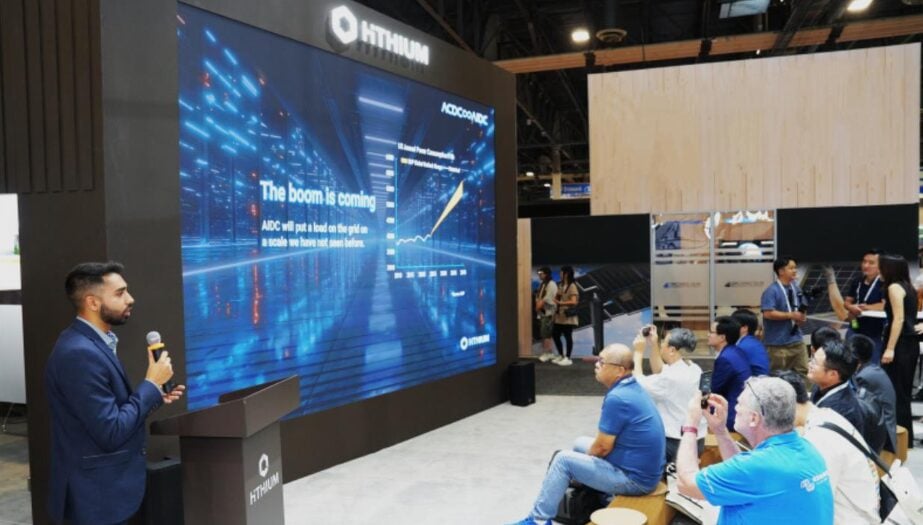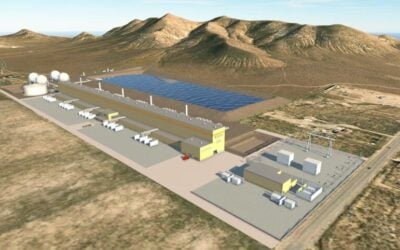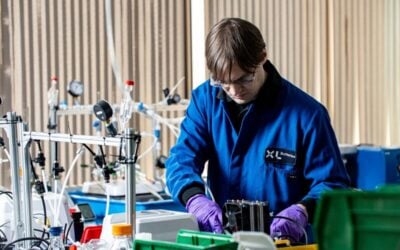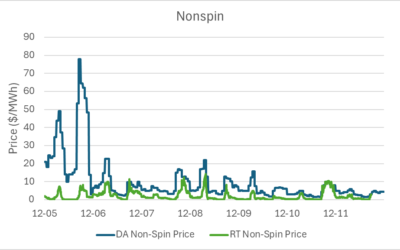
Hithium has announced its lithium-ion and sodium-ion battery energy storage system (BESS) for supporting data centres, while Storion Energy has secured its first vanadium electrolyte customer.
Hithium supporting data centres with lithium-ion and sodium-ion BESS
Hithium has launched its AI data centre energy storage system (ESS) portfolio, including a 6.25MWh BESS at the RE+ trade show in Las Vegas, US.
In addition to the 6.25MWh, 8-hour duration BESS, the company announced its N2.28MWh BESS and a dedicated lifespan assessment model for AI data centre (AIDC) ESS.
The 6.25MWh BESS utilises lithium-ion (Li-ion) battery technology, while the N2.28MWh BESS utilises sodium-ion (Na-ion) battery technology.
Try Premium for just $1
- Full premium access for the first month at only $1
- Converts to an annual rate after 30 days unless cancelled
- Cancel anytime during the trial period
Premium Benefits
- Expert industry analysis and interviews
- Digital access to PV Tech Power journal
- Exclusive event discounts
Or get the full Premium subscription right away
Or continue reading this article for free
Hithium said the solution “addresses both the real-time and reliability requirements of data centres while helping boost renewable energy utilisation.”
Speakers at the RE+ trade show have pointed to the immense load growth from data centres as an opportunity for energy storage development.
At the moment, given the budget reconciliation bill’s negative targeting of wind and solar energy, BESS is available for rapid deployment to, in theory, meet that load growth.
Hithium emphasised that in the AI era, data centres will need to balance energy transition while maintaining efficient operations.
However, intermittency and millisecond-level load fluctuations have presented a challenge for data centres, creating a need for long-duration energy storage (LDES).
Hithium noted that combining Li-ion and Na-ion enables “data centre operators to meet both base load and peak demands efficiently, without sacrificing reliability.” Meanwhile, “the dedicated lifetime assessment model for AIDC ESS further ensures precise degradation insights, longer and more reliable project lifespan guaranteed under highly dynamic workloads.”
The company also claimed that the AIDC ESS solution can reduce the levelised cost of electricity (LCOE), improving the efficiency of AI power supply.
Hithium’s Na-Ion cell, N162 Ah, has a low levelised cost of storage (LCOS), with a wide temperature range and high thermal stability, with no fire or explosion during nail penetration and crush tests.
Recently, Hithium opened a 10GWh, 484,441-square-foot battery module and system factory in Mesquite, Texas. The company said the investment figure for the factory was close to US$200 million.
Storion secures first vanadium electrolyte customer
Vanadium redox flow battery (VRFB) joint venture from Stryten and Largo Clean Energy, Storion Energy, has secured its first customer for vanadium electrolyte from its continuous production line.
Storion established the production line with support from the US Department of Energy’s (DOE’s) Manufacture of Advanced Key Energy Infrastructure Technologies (MAKE IT) prize, of US$5 million, which the company received in 2024.
The company says the MAKE IT funds have been critical to enabling Storion’s growth since its launch this February.
Largo Physical Vanadium, which owns the vanadium, will deliver 50MWh of electrolyte to TerraFlow Energy for a 9.6MW/48MWh VRFB installation in Bellville, Texas.
In July, TerraFlow signed a strategic supply agreement with Storion. Under the agreement, Storion will provide its vanadium electrolyte production and manufacturing abilities to scale TerraFlow’s skid-based architecture.
Speaking with Energy-Storage.news Premium in April, Travis Torrey, CTO of Storion, said of the company’s current market approach:
“Our first approach has been to create a domestic supply chain. That lets us be local in a way that many companies are not.”





